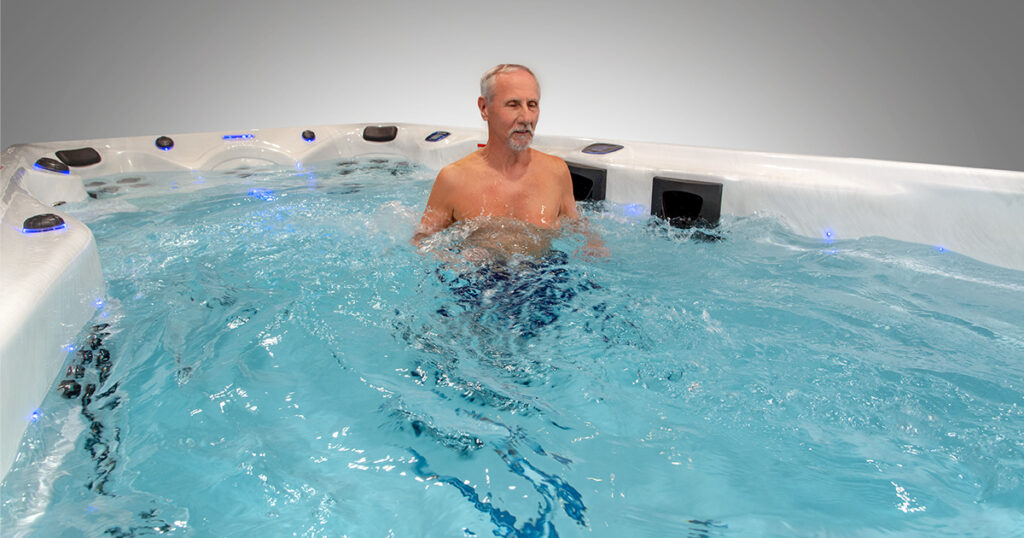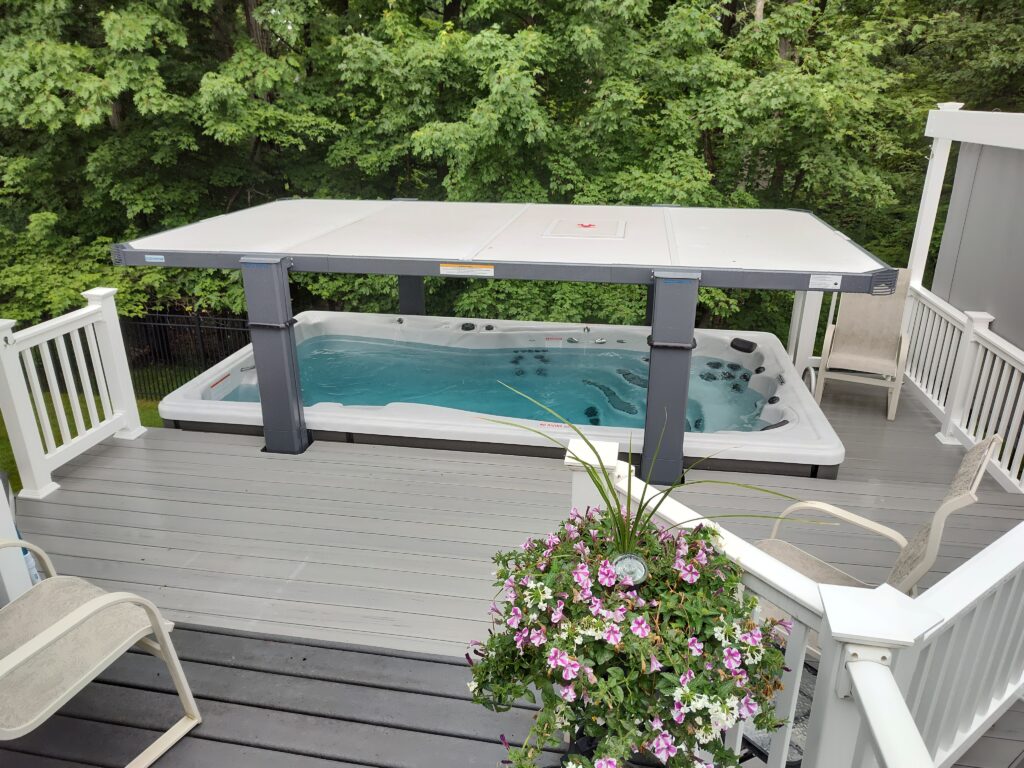When you were younger, 55 felt like a lifetime away — an age reserved for parents, teachers, and neighbors who seemed so grown up. But now that you’re here, it feels completely different. You’re making time to travel, explore new interests (hello, painting class), and maybe even join friends for a weekend pickleball tournament. With the kids grown and feeling more secure in your career, you finally have the freedom to focus on yourself.
Instead of slowing down like you thought you would, you’re more active than ever. Life feels full, and you want to keep it that way. But to do that, taking care of yourself — especially your heart — is more important than ever. February is Heart Health Month, a reminder that staying active and managing stress aren’t just good habits; they’re the key to living the life you want.
The challenge? Building an active lifestyle that feels good on your body and not like a chore. High-impact workouts might not be your thing anymore, and long hours at the gym aren’t exactly appealing. That’s where water exercise comes in. A Michael Phelps Signature Swim Spa makes it easy to get a heart-healthy workout that’s gentle on the joints, effective for fitness, and — best of all — something you’ll actually enjoy.

Why heart health matters after 55
As you enter your 50s, taking care of your heart becomes more important than ever. Heart disease risk increases with age. According to the American Heart Association, more than 126 million Americans have some form of cardiovascular disease. In fact, between 2015 and 2018, 77.5% of men and 75.4% of women aged 60 to 79 had cardiovascular disease, including hypertension, according to the American Heart Association.
Why does this happen? Over time, changes in blood vessels, metabolism, and overall fitness levels can make heart health harder to maintain. Factors like high blood pressure, cholesterol, and decreased activity add to the risk.
It’s easy to think of high blood pressure and cholesterol as just part of getting older. But ignoring them or brushing them off can raise your risk of stroke, heart attack, and other serious heart issues. The good news? While they may seem inevitable, small lifestyle changes can make a big difference in protecting your heart and overall health.

A holistic approach to heart health
Taking care of your heart isn’t about making one single change; it’s about adopting a well-rounded, holistic approach to wellness. You can use Heart Health Month as an opportunity to make small, consistent efforts in different areas of your life, which can add up to big improvements.
Stay active
Regular exercise is one of the most effective ways to protect your heart. Activities like walking, swimming, cycling, and weight training help prevent key heart disease risk factors, such as high blood pressure and cholesterol, or slow their progression. Even leisure activities like gardening or recreational walking contribute to better heart health, research shows.
Aim for at least 150 minutes of moderate-intensity aerobic exercise each week. You can go to a dance class, walk in the water, or play pickleball. These exercises not only improve cardiovascular health but also help manage weight and reduce stress.
Eat heart-smart foods
What you eat plays a significant role in heart health. From Mediterranean to DASH, vegan to low fat, it’s important to focus on incorporating a variety of nutrient-dense foods. A diet filled with fresh fruits and vegetables, lean proteins, and whole grains are best for your heart health. Reducing processed foods, excess sugar, and sodium can help manage blood pressure and cholesterol levels, giving your heart the support it needs to stay strong.
Manage stress
Whether it’s work stress, marital issues, or feelings of isolation, research shows that chronic stress can take a toll on your heart, so finding ways to manage it is key. Incorporate activities that promote relaxation and mental well-being, like gentle stretching in warm water, meditation, or spending quality time with loved ones. These activities can help lower stress hormones and improve overall heart function.
Prioritize sleep
Quality sleep is a cornerstone of good heart health. Poor sleep patterns can raise your risk for heart disease, so it’s important to establish a bedtime routine. Aim to avoid screens before bed and create a peaceful environment to help you relax and get restorative rest, allowing your heart to recover overnight.
Get regular check-ups
Working with your healthcare provider to monitor key heart health indicators is crucial. Regular check-ups help you keep an eye on your blood pressure, cholesterol levels, and overall cardiovascular health. This proactive approach allows you to catch potential issues early and make adjustments to your lifestyle as needed.

Water exercise for heart health
Staying active is important, but that doesn’t mean you have to hit the gym. Maybe high-impact workouts are too hard on your joints, or you’ve never really enjoyed the gym atmosphere. And if you’ve always thought water exercise was just for older adults, it really is a great option for staying fit without the strain.
Aquatic workouts are gentle on your body but powerful for your heart. Whether it’s swimming, water walking, or resistance exercises, moving in water helps you stay strong, protect your joints, and support your heart health.
Improve circulation
Water’s natural resistance increases the workload on your heart, helping it pump more efficiently without placing excessive strain on your joints or muscles. Research shows that aquatic exercise can enhance circulation, delivering more oxygen and nutrients throughout the body, which supports overall cardiovascular function.
Lower blood pressure
High blood pressure is one of the most significant risk factors for heart disease and stroke, affecting nearly half of U.S. adults — an estimated 116 million people. According to research, about 60% of people develop hypertension by age 60, and that number rises with age.
Studies have shown that regular water exercise can help lower blood pressure by improving vascular function and promoting relaxation. The buoyancy of water reduces stress on the body, allowing for effective cardiovascular conditioning without the high impact of land-based workouts.
Enhance cardiovascular endurance
Swimming and water aerobics provide continuous, low-impact movement that strengthens the heart muscle over time. By increasing heart rate and improving oxygen efficiency, these activities help build cardiovascular endurance, which can lead to better stamina, increased energy levels, and improved overall well-being.
Reduce stress
Chronic stress can negatively impact heart health by increasing inflammation and raising blood pressure. Water exercise naturally promotes relaxation by reducing cortisol levels — the hormone associated with stress. The rhythmic movements and soothing sensation of being in water can enhance mental clarity and improve mood, contributing to a healthier heart.

A swim spa makes heart-healthy exercise more accessible
A Michael Phelps Signature Swim Spa allows you to experience the benefits of aquatic exercise in your own backyard. With adjustable current settings, you can customize your workout — whether it’s swimming, walking, or low-impact resistance training — based on your fitness level and goals. Regular use can help improve heart health, increase mobility, and support overall wellness without the barriers of traditional gym workouts.
The power of connection
Life can be busy, and it’s easy to get caught up in daily routines. But staying connected with family and friends is just as important for your heart health as staying active. Research shows that people with strong social connections tend to live longer and have a lower risk of heart disease.
A swim spa offers a practical way to bring people together. Unlike a traditional pool, it can be used year-round, providing a space for both exercise and relaxation. Whether it’s spending time with the grandkids or unwinding with a partner, these shared experiences can help lower stress and support overall well-being.
Making wellness a lifestyle
A Michael Phelps Signature Swim Spa makes it easier to embrace a heart-healthy lifestyle, offering a convenient and enjoyable way to stay active while spending quality time with family. Unlike a traditional pool, a swim spa is designed for year-round use, meaning you can keep up with your wellness routine no matter the season. The soothing warmth of the spa seats also helps relax muscles, improve circulation, and enhance recovery after exercise.
Taking care of your heart doesn’t have to be a chore — it can be a joyful part of daily life. By incorporating water exercise, meaningful social connections, and a heart-conscious lifestyle, you can enjoy an active and fulfilling retirement. This February, make the commitment to your heart and your well-being. With a swim spa in your backyard, better health and more quality moments with family are always within reach.

How to buy a swim spa
Do you want to be able to swim, exercise, and relax at home? A Michael Phelps Signature Swim Spa allows you to swim on your schedule while adding a fun factor to your backyard. Click here to find out more about the benefits of hydrotherapy and relaxing in a hot tub. Or, contact your local Master Spas retailer to learn more about swim spa ownership. Wondering how much a swim spa costs? You can request a quote here.

